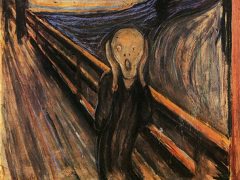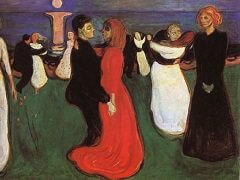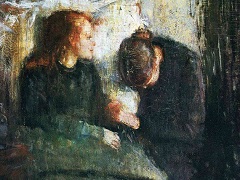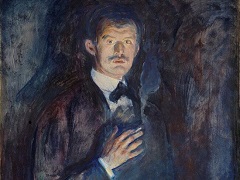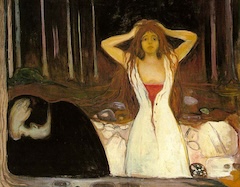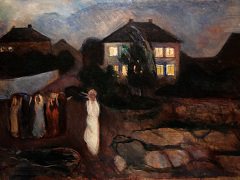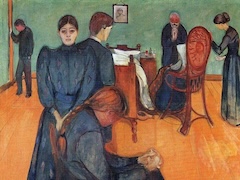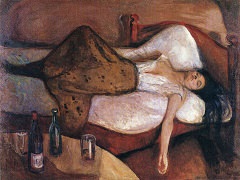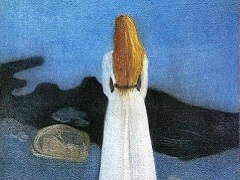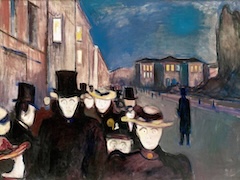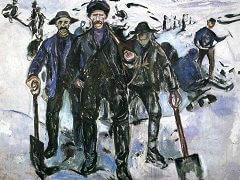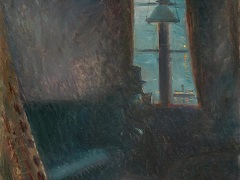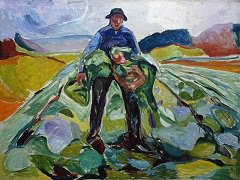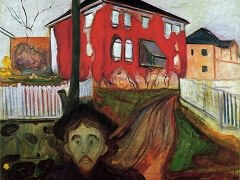Spring Day on Karl Johan Street, 1891 by Edvard Munch
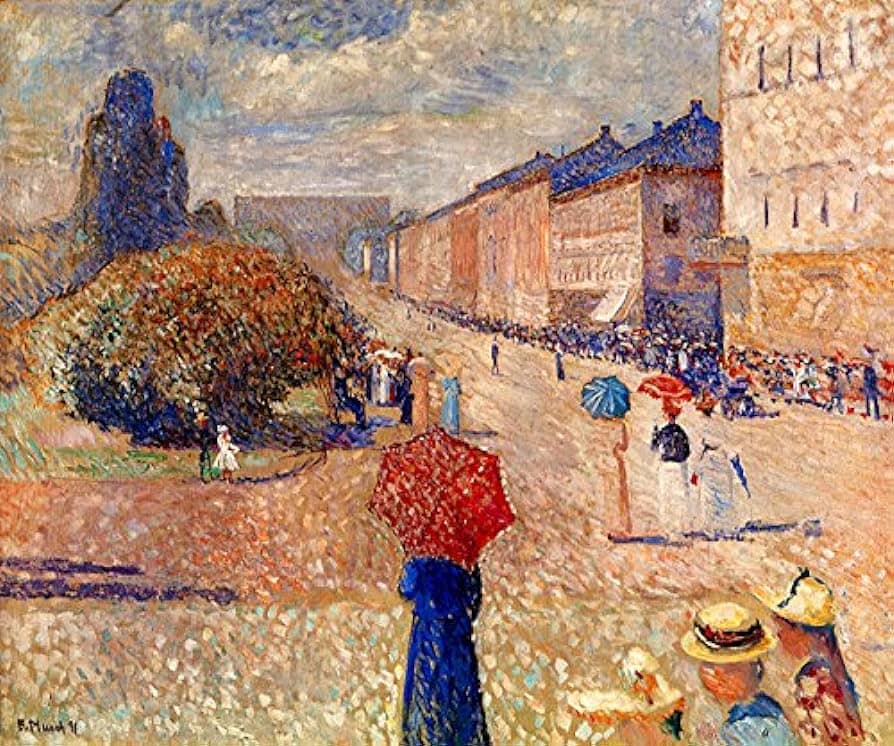
Georges Seurat replaces Manet as the leading influence on Munch in this work. The fluid masses of the crowds now sparkle and glitter with the speckled application of contrasting warm and cool colours.
Munch's emotive perception of the vigour and freshness of a spring day, however, breaks through the rationalist 'scientific' control of pointillism advocated by Georges Seurat, and, as in the pointillist paintings by Van Gogh and Gauguin, impatience with the process produces inconsistent results over the surface - such as the trio, right of centre, who escape pointillist handling completely. In contrast to Camille Pissarro, another influential exponent of pointillism, Munch sees the importance of maintaining a strong structure in order to impose a sense of depth; the greyish look pointillism often produces (which Seurat used to great effect in his late landscapes) can vitiate the power of form and lead to flaccidity. Munch's spontaneity avoids this pitfall.

